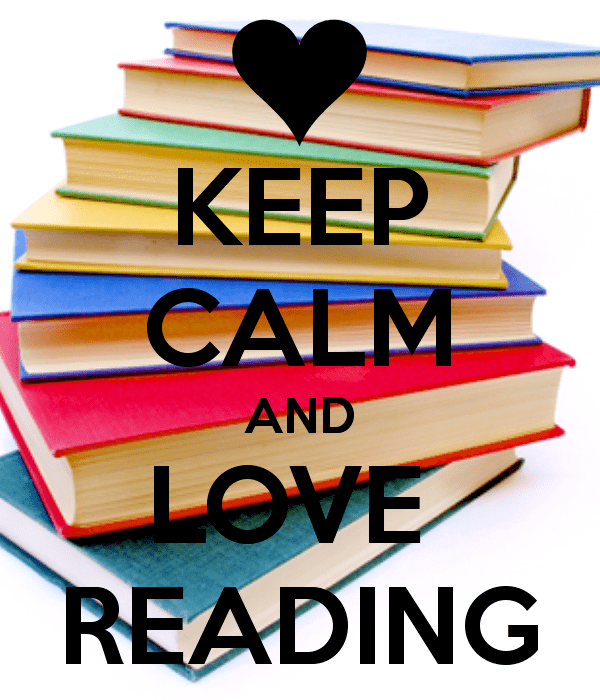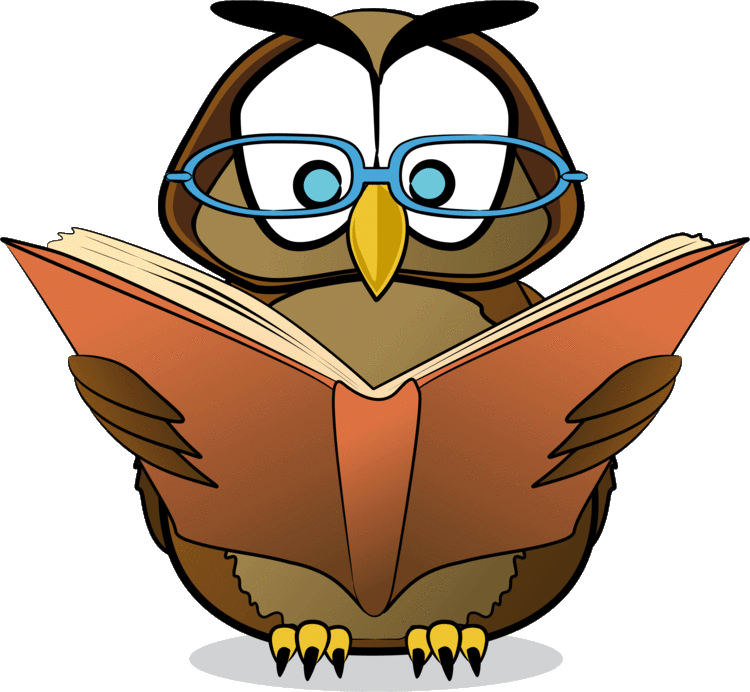 | ||
Reading is a complex "cognitive process" of decoding symbols in order to construct or derive meaning (reading comprehension). Reading is a means of language acquisition, communication, and of sharing information and ideas. Like all languages, it is a complex interaction between the text and the reader which is shaped by the reader’s prior knowledge, experiences, attitude, and language community which is culturally and socially situated. The reading process requires continuous practice, development, and refinement. In addition, reading requires creativity and critical analysis. Consumers of literature make ventures with each piece, innately deviating from literal words to create images that make sense to them in the unfamiliar places the texts describe. Because reading is such a complex process, it cannot be controlled or restricted to one or two interpretations. There are no concrete laws in reading, but rather allows readers an escape to produce their own products introspectively. This promotes deep exploration of texts during interpretation. Readers use a variety of reading strategies to assist with decoding (to translate symbols into sounds or visual representations of speech) and comprehension. Readers may use context clues to identify the meaning of unknown words. Readers integrate the words they have read into their existing framework of knowledge or schema (schemata theory).
Contents
- Overview
- Reading skills
- Skill development
- Sub lexical reading
- Lexical reading
- Methods
- Assessment
- Types of tests
- Timed Reading
- Cognitive benefits
- Lighting
- History
- References

Other types of reading are not speech based writing systems, such as music notation or pictograms. The common link is the interpretation of symbols to extract the meaning from the visual notations or tactile signals (as in the case of Braille).

Overview

Currently most reading is either of the printed word from ink or toner on paper, such as in a book, magazine, newspaper, leaflet, or notebook, or of electronic displays, such as computer displays, television, mobile phones or e-readers. Handwritten text may also be produced using a graphite pencil or a pen. Short texts may be written or painted on an object.

Often the text relates to the object, such as an address on an envelope, product info on packaging, or text on a traffic or street sign. A slogan may be painted on a wall. A text may also be produced by arranging stones of a different color in a wall or road. Short texts like these are sometimes referred to as environmental print.

Sometimes text or images are in relief, with or without using a color contrast. Words or images can be carved in stone, wood, or metal; instructions can be printed in relief on the plastic housing of a home appliance, or myriad other examples.
A requirement for reading is a good contrast between letters and background (depending on colors of letters and background, any pattern or image in the background, and lighting) and a suitable font size. In the case of a computer screen, it is important to be able to see an entire line of text without scrolling.
The field of visual word recognition studies how people read individual words. A key technique in studying how individuals read text is eye tracking. This has revealed that reading is performed as a series of eye fixations with saccades between them. Humans also do not appear to fixate on every word in a text, but instead fixate to some words while apparently filling in the missing information using context. This is possible because human languages show certain linguistic regularities.
The process of recording information to be read later is writing. In the case of computer and microfiche storage there is the separate step of displaying the written text. For humans, reading is usually faster and easier than writing.
Reading is typically an individual activity, although on occasion a person will read out loud for the benefit of other listeners. Reading aloud for one's own use, for better comprehension, is a form of intrapersonal communication: in the early 1970s has been proposed the dual-route hypothesis to reading aloud, accordingly to which there were two separate mental mechanisms, or cognitive routes, that are involved in this case, with output of both mechanisms contributing to the pronunciation of a written stimulus.
Reading to young children is a recommended way to instill language and expression, and to promote comprehension of text. Personalised books for children are recommended to improve engagement in reading by featuring the child themselves in the story.
Before the reintroduction of separated text in the late Middle Ages, the ability to read silently was considered rather remarkable.
Reading skills
Literacy is the ability to use the symbols of a writing system. It is the ability to interpret what the information symbols represent, and to be able to re-create those same symbols so that others can derive the same meaning. Illiteracy is the inability to derive meaning from the symbols used in a writing system. Dyslexia refers to a cognitive difficulty with reading and writing. It is defined as brain-based type of learning disability that specifically impairs a person's ability to read. The term dyslexia can refer to two disorders: developmental dyslexia which is a learning disability; alexia (acquired dyslexia) refers to reading difficulties that occur following brain damage, stroke, or progressive illness.
Major predictors of an individual's ability to read both alphabetic and nonalphabetic scripts are phonological awareness, rapid automatized naming and verbal IQ. Being taught to read at an early age (such as five years old) does not ultimately result in better reading skills, and if it replaces more developmentally appropriate activities, then it may cause other harms.
Skill development
Both lexical and sub-lexical cognitive processes contribute to how we learn to read.
Sub-lexical reading
Sub-lexical reading, involves teaching reading by associating characters or groups of characters with sounds or by using phonics or synthetic phonics learning and teaching methodology, sometimes argued to be in competition with whole language methods.
Lexical reading
Lexical reading involves acquiring words or phrases without attention to the characters or groups of characters that compose them or by using whole language learning and teaching methodology. Sometimes argued to be in competition with phonics and synthetic phonics methods, and that the whole language approach tends to impair learning how to spell.
Other methods of teaching and learning to read have developed, and become somewhat controversial.
Learning to read in a second language, especially in adulthood, may be a different process than learning to read a native language in childhood. There are cases of very young children learning to read without having been taught. Such was the case with Truman Capote who reportedly taught himself to read and write at the age of five. There are also accounts of people who taught themselves to read by comparing street signs or Biblical passages to speech. The novelist Nicholas Delbanco taught himself to read at age six during a transatlantic crossing by studying a book about boats.
Brain activity in young and older children can be used to predict future reading skill. Cross model mapping between the orthographic and phonologic areas in the brain are critical in reading. Thus, the amount of activation in the left dorsal inferior frontal gyrus while performing reading tasks can be used to predict later reading ability and advancement. Young children with higher phonological word characteristic processing have significantly better reading skills later on than older children who focus on whole-word orthographic representation.
Methods
There are several types and methods of reading, with differing rates that can be attained for each, for different kinds of material and purposes:
Assessment
Note: the data from Taylor (English) and Landerl (German) are based on texts of increasing difficulty; other data were obtained when all age groups were reading the same text.
Rates of reading include reading for memorization (fewer than 100 words per minute [wpm]); reading for learning (100–200 wpm); reading for comprehension (200–400 wpm); and skimming (400–700 wpm). Reading for comprehension is the essence of the daily reading of most people. Skimming is for superficially processing large quantities of text at a low level of comprehension (below 50%).
Scientific studies have demonstrated that reading—defined here as capturing and decoding all the words on every page—faster than 900 wpm is not feasible given the limits set by the anatomy of the eye.
Advice for choosing the appropriate reading-rate includes reading flexibly, slowing when concepts are closely presented and when the material is new, and increasing when the material is familiar and of thin concept. Speed reading courses and books often encourage the reader to continually accelerate; comprehension tests lead the reader to believe his or her comprehension is continually improving; yet, competence-in-reading requires knowing that skimming is dangerous, as a default habit.
Reading speed requires a long time to reach adult levels. The table to the right shows how reading-rate varies with age, regardless of the period (1965 to 2005) and the language (English, French, German). The Taylor values probably are higher, for disregarding students who failed the comprehension test. The reading test by the French psychologist Pierre Lefavrais ("L'alouette", published in 1967) tested reading aloud, with a penalty for errors, and could, therefore, not be a rate greater than 150 wpm. According to Carver (1990), children's reading speed increases throughout the school years. On average, from grade 2 to college, reading rate increases 14 standard-length words per minute each year (where one standard-length word is defined as six characters in text, including punctuation and spaces).
Reading speed has been used as a measure in research to determine the effect of interventions on human vision. A Cochrane Systematic Review used reading speed in words per minute as the primary outcome in comparing different reading aids for adults with low vision.
Types of tests
Some tests incorporate several of the above components at once. For instance, the Nelson-Denny Reading Test scores readers both on the speed with which they can read a passage, and also their ability to accurately answer questions about this passage. Recent research has questioned the validity of the Nelson-Denny Reading Test, especially with regard to the identification of reading disabilities.
Timed Reading
Timed Reading is an educational tool used in many schools to improve and advance reading skills. Timed reading involves the use of various strategies in conjunction with in-class exercises and extensive timed reading. Timed reading isn't reading as-fast-as-you-can over a passage and simply marking the gradual improvement (if there are any). It involves reading strategies via the teacher's instruction. Training in strategic use is what timed reading promotes and reflects what Devine means by, "...training enhances the metacognitive knowledge base of readers and results in improved reading performance."(Devine 1993)
Cognitive benefits
Reading books and writing are among brain-stimulating activities shown to slow down cognitive decline in old age, with people who participated in more mentally stimulating activities over their lifetimes having a slower rate of decline in memory and other mental capacities. Reading for pleasure has been linked to increased cognitive progress in vocabulary and mathematics during adolescence. Moreover, the cognitive benefits of reading continue into mid-life and old age.
Lighting
Reading from paper and from some screens requires more lighting than many other activities. Therefore, the possibility of doing this comfortably in cafés, restaurants, buses, at bus stops or in parks greatly varies depending on available lighting and time of day.
Reading from screens which produce their own light is less dependent on external light, except that this may be easier with little external light. For controlling what is on the screen (scrolling, turning the page, etc.), a touch screen or keyboard illumination further reduces the dependency on external light.
History
The history of reading dates back to the invention of writing during the 4th millennium BC. Although reading print text is now an important way for the general population to access information, this has not always been the case. With some exceptions, only a small percentage of the population in many countries was considered literate before the Industrial Revolution. Some of the pre-modern societies with generally high literacy rates included classical Athens and the Islamic Caliphate.
Scholars assume that reading aloud (Latin clare legere) was the more common practice in antiquity, and that reading silently (legere tacite or legere sibi) was unusual. In his Confessions, Saint Augustine remarks on Saint Ambrose's unusual habit of reading silently in the 4th century AD.
During the Age of Enlightenment, elite individuals promoted passive reading, rather than creative interpretation. Reading has no concrete laws, but rather allows readers an escape to produce their own products introspectively, promoting deep exploration of texts during interpretation. Construction, or the creation of writing and producing a product, was believed to be a sign of initiative and active participation in society, while consumption or reading, was viewed as simply taking in what constructors made. Also during this era, writing was considered superior to reading in society. Readers during this time were considered passive citizens, simply because they did not produce a product. Michel de Certeau argued that the elites of the Age of Enlightenment were responsible for this general belief. Michel de Certeau believed that reading required venturing into an author's land, but taking away what the reader wanted specifically. Writing was viewed as a superior art to reading during this period, due to the hierarchical constraints the era initiated.
